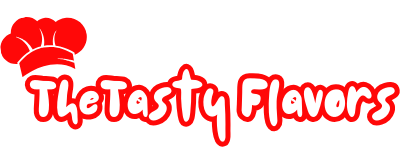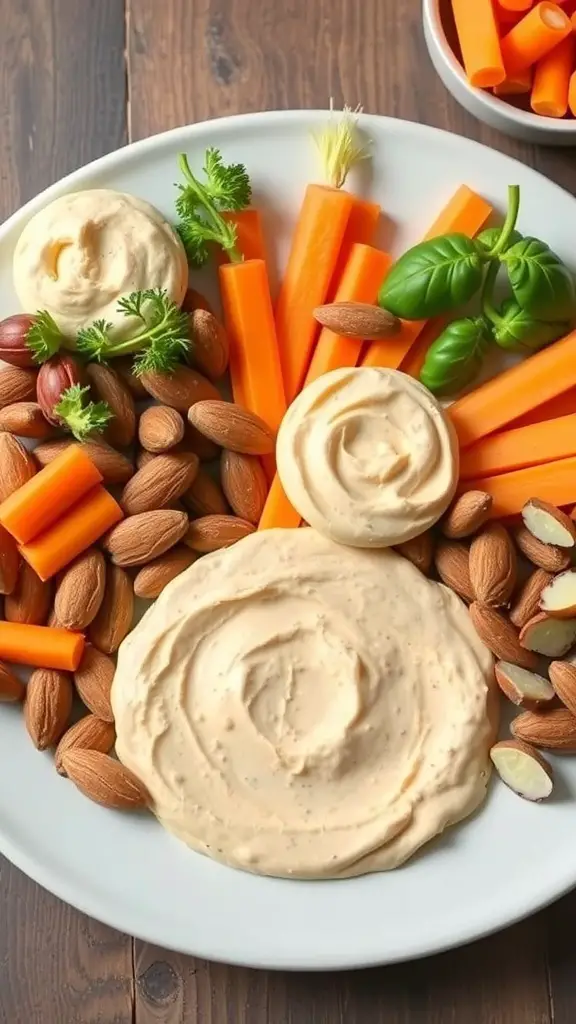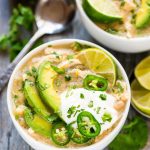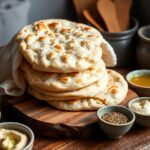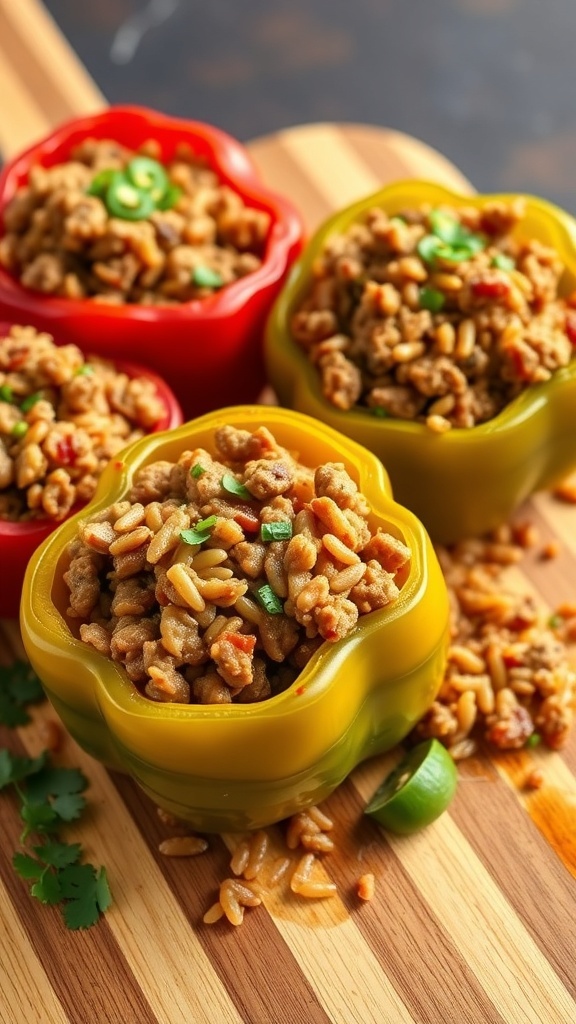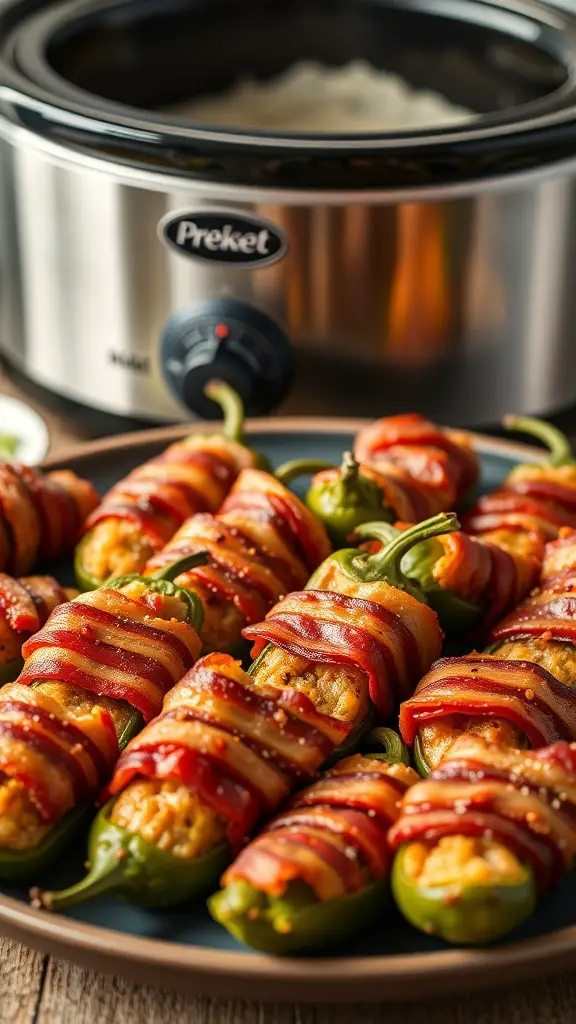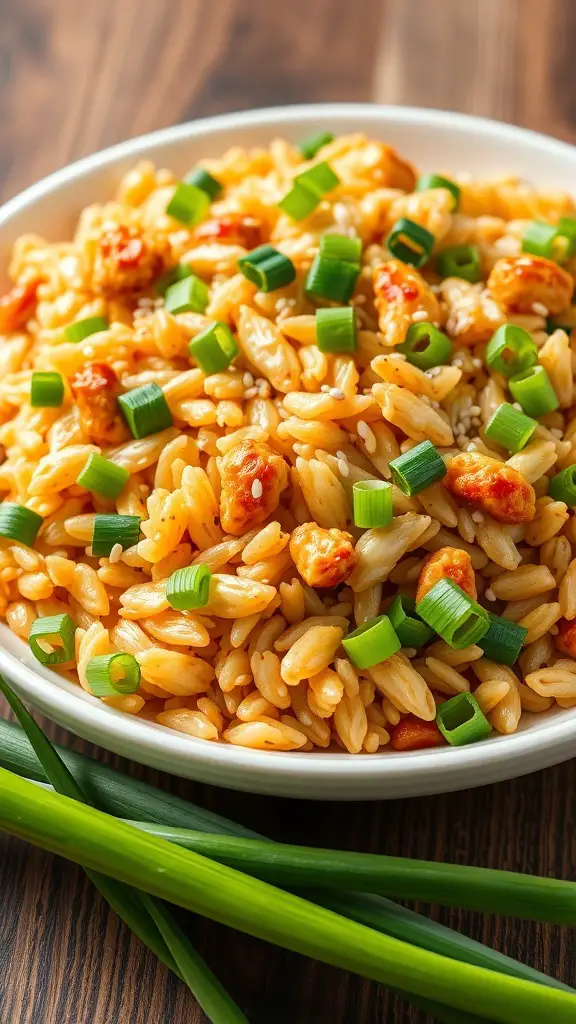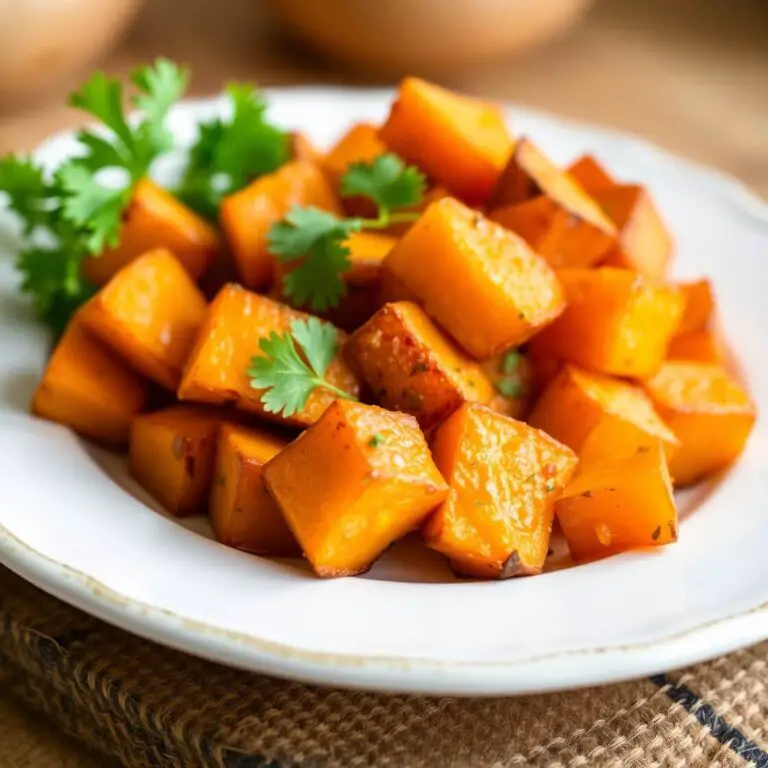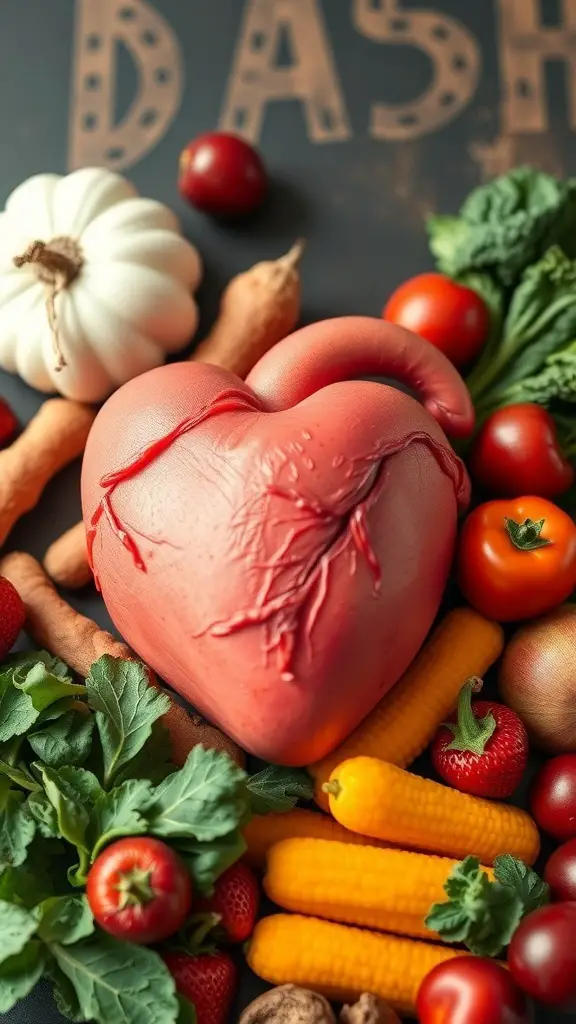
The DASH diet, which stands for Dietary Approaches to Stop Hypertension, is a simple and effective way to boost your health without feeling deprived. It focuses on whole foods like fruits, vegetables, lean proteins, and whole grains, making it easy for beginners to get started. Whether you’re looking to lower blood pressure or just eat better, this guide will give you all the tips and tricks to make the DASH diet work for you.
Snacking Smart on the DASH Diet
Snacking can be a fun and healthy part of the DASH diet. The image shows a colorful plate filled with fresh carrot sticks, almonds, and creamy dips. This combination is not just visually appealing but also packed with nutrients.
Carrots are a great source of vitamins and fiber, making them a perfect snack option. Pairing them with a tasty dip adds flavor without compromising health. Almonds provide healthy fats and protein, keeping you satisfied between meals.
When snacking, aim for balance. Look for options that include fruits, vegetables, whole grains, and lean proteins. This way, you can enjoy your snacks while sticking to the DASH principles.
Benefits of the DASH Diet for Heart Health

The DASH diet, which stands for Dietary Approaches to Stop Hypertension, focuses on whole foods that are great for your heart. The image shows a vibrant heart surrounded by fresh vegetables and fruits, highlighting the diet’s emphasis on nutritious ingredients.
This diet encourages eating plenty of vegetables, fruits, whole grains, and lean proteins. These foods are rich in essential nutrients that help lower blood pressure and improve overall heart health. The colorful produce in the image symbolizes the variety of options you can enjoy while following this plan.
By reducing sodium intake and increasing potassium-rich foods, the DASH diet helps maintain healthy blood pressure levels. The heart in the image serves as a reminder of the importance of caring for our cardiovascular system through mindful eating.
Incorporating foods like leafy greens, berries, and nuts not only supports heart health but also adds flavor and satisfaction to meals. This approach makes it easier to stick to healthy habits while enjoying delicious food.
Understanding the DASH Diet Principles
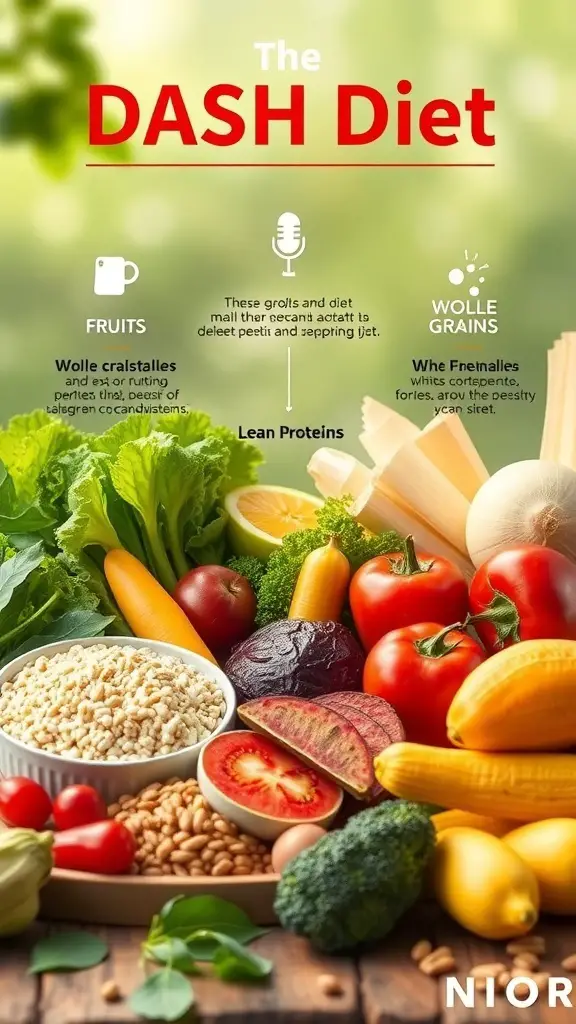
The DASH diet, which stands for Dietary Approaches to Stop Hypertension, focuses on eating whole, nutritious foods. The image showcases a colorful array of fruits, vegetables, whole grains, and lean proteins. These foods are essential for anyone looking to adopt this diet.
Fruits and vegetables are at the heart of the DASH diet. They provide vitamins, minerals, and fiber. The image highlights vibrant options like tomatoes, broccoli, and leafy greens. These choices help lower blood pressure and improve overall health.
Whole grains are another key component. Foods like brown rice and whole wheat bread offer energy and nutrients. They help keep you full and satisfied. Lean proteins, such as chicken and beans, are also important. They support muscle health and keep your diet balanced.
Overall, the DASH diet encourages a lifestyle change rather than a quick fix. It’s about making healthier choices that you can stick with long-term. The colorful foods in the image serve as a reminder that eating well can be both nutritious and enjoyable.
Understanding Sodium Intake Guidelines
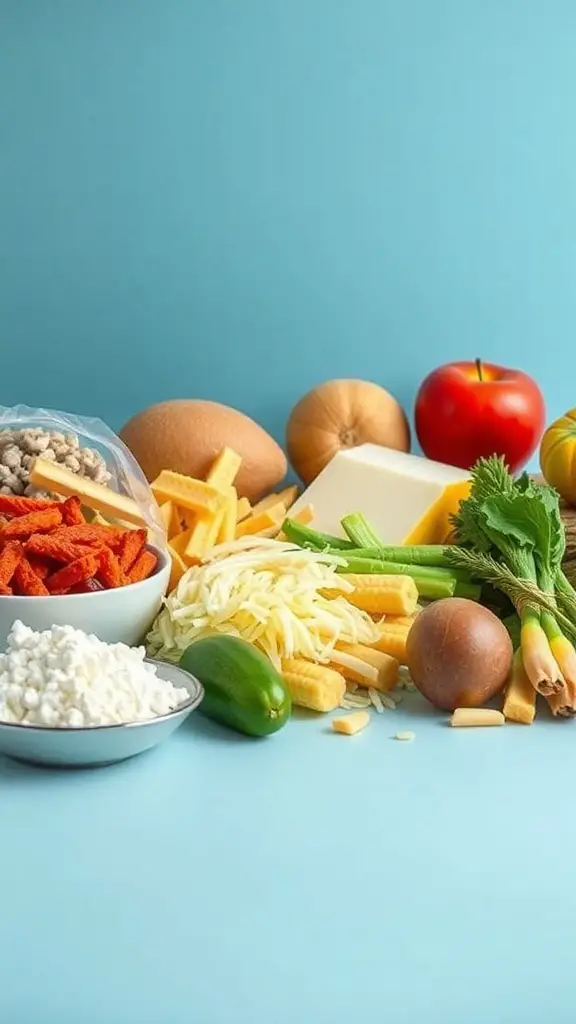
The image showcases a colorful array of ingredients, highlighting the importance of fresh foods in the DASH diet. You can see various vegetables, fruits, and dairy products, all of which are essential for a balanced diet.
When it comes to sodium intake, the DASH diet encourages keeping it low. The goal is to consume less than 2,300 mg of sodium per day, which can help lower blood pressure and improve heart health. For those looking to make a more significant impact, aiming for 1,500 mg is even better.
Incorporating fresh ingredients like those in the image can help you achieve these sodium goals. Fresh fruits and vegetables are naturally low in sodium, making them excellent choices. Processed foods, on the other hand, often contain high levels of sodium, so it’s best to limit those.
Reading labels is key. When shopping, look for low-sodium options and be mindful of serving sizes. Cooking at home allows you to control the amount of salt you add, making it easier to stick to your sodium goals.
Incorporating Exercise with the DASH Diet

Combining exercise with the DASH diet can boost your health in many ways. The image shows a woman preparing for her workout, highlighting the importance of staying active while following a healthy eating plan.
The DASH diet focuses on whole foods, which can fuel your workouts. Think of fruits, vegetables, whole grains, and lean proteins. These foods provide the energy you need to stay active and feel great.
Exercise doesn’t have to be intense. Simple activities like walking, jogging, or yoga can fit well with the DASH diet. Aim for at least 150 minutes of moderate exercise each week. This can help lower blood pressure and improve overall well-being.
Staying hydrated is also key. Carrying a water bottle, like the one in the image, can remind you to drink enough fluids during your workouts. Proper hydration supports your body and enhances your performance.
Remember, the goal is to create a balanced lifestyle. Pairing the DASH diet with regular physical activity can lead to lasting health benefits. So, get moving and enjoy the journey!
Essential Foods to Include in Your DASH Diet
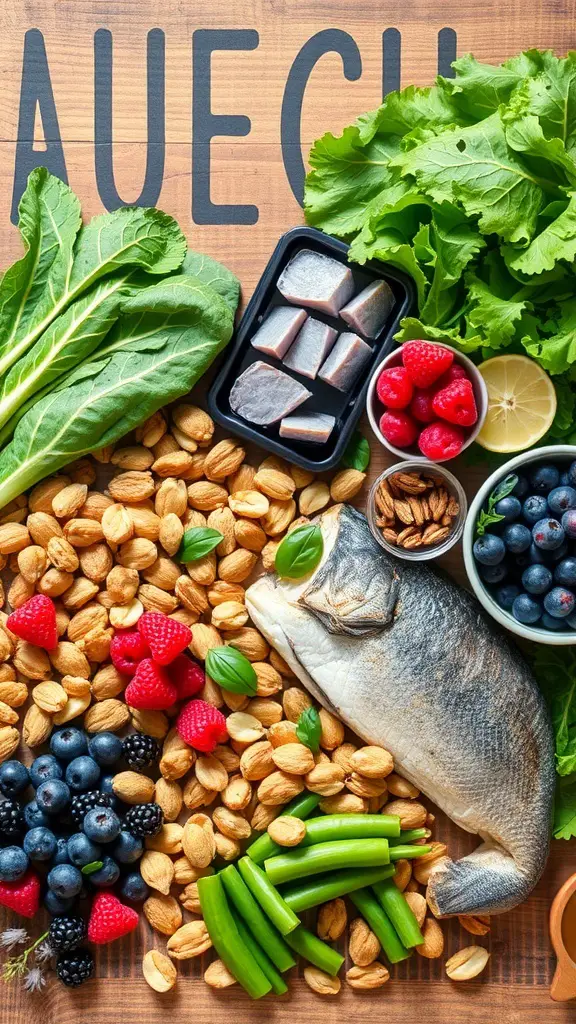
The DASH diet focuses on whole foods that promote heart health. The image showcases a colorful assortment of ingredients that fit perfectly into this diet plan.
Leafy greens like spinach and kale are staples. They are packed with nutrients and low in calories. Adding these to your meals boosts vitamins and minerals.
Fruits are another key component. Berries, such as blueberries and raspberries, provide antioxidants and natural sweetness. They make great snacks or additions to breakfast.
Healthy fats are important too. Nuts, especially almonds, offer protein and healthy fats, making them a great snack option. They help keep you full and satisfied.
Fish, like the one shown, is a fantastic source of lean protein. It’s rich in omega-3 fatty acids, which are beneficial for heart health. Incorporating fish into your meals a couple of times a week is a smart choice.
Don’t forget about legumes! They are high in fiber and protein. Beans and lentils can easily be added to salads or soups for extra nutrition.
Lastly, whole grains should not be overlooked. Foods like brown rice and quinoa provide energy and help maintain a balanced diet. They are great bases for many meals.
Creating a Balanced DASH Meal Plan
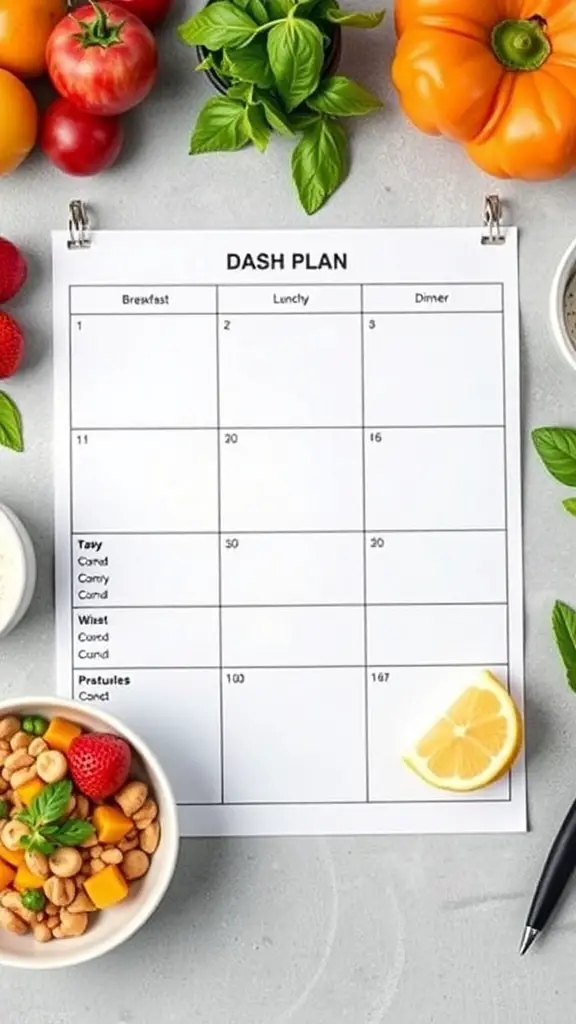
The DASH diet focuses on whole foods, aiming to lower blood pressure and improve overall health. A balanced meal plan is key to making this diet work for you.
The image shows a DASH meal plan template, which is a great starting point. It includes sections for breakfast, lunch, and dinner, making it easy to organize your meals for the week.
Incorporate plenty of fruits and vegetables, whole grains, and lean proteins. For breakfast, think oatmeal topped with berries or a smoothie. Lunch could be a salad with grilled chicken and a variety of colorful veggies. Dinner might include baked fish with quinoa and steamed broccoli.
Don’t forget to include healthy snacks, like nuts or yogurt, to keep your energy up throughout the day. This meal plan helps you stay on track while enjoying delicious, nutritious foods.
Hydration Tips for the DASH Diet

Staying hydrated is key when following the DASH diet. This image shows a refreshing drink with slices of lemon, orange, and mint leaves, making hydration look appealing and tasty.
Infused water is a great way to enjoy hydration. You can add fruits like berries or citrus, along with herbs like mint or basil. This not only enhances the flavor but also encourages you to drink more.
Another tip is to keep a water bottle handy. Having it within reach makes it easier to sip throughout the day. You can also set reminders on your phone to drink water regularly.
Consider herbal teas as well. They can be enjoyed hot or cold and come in various flavors. This adds variety to your hydration routine.
Lastly, remember that fruits and vegetables also contribute to your daily water intake. Eating foods like cucumbers, watermelon, and oranges can help keep you hydrated while sticking to the DASH diet.
Adapting Family Recipes to Fit the DASH Diet

Family meals are a wonderful way to connect and share traditions. The image shows a family gathered around a table, enjoying a meal together. This setting is perfect for discussing how to adapt beloved recipes to fit the DASH diet.
The DASH diet focuses on whole foods, fruits, vegetables, lean proteins, and whole grains. Start by swapping out high-sodium ingredients in your family recipes. For example, use herbs and spices for flavor instead of salt. This keeps the taste while making the dish healthier.
Consider using whole grain pasta instead of white pasta in your favorite casserole. You can also add extra veggies to boost nutrition. If your family loves tacos, try using lean turkey or chicken instead of beef. Load them up with fresh toppings like lettuce, tomatoes, and avocado.
Don’t forget about desserts! You can make fruit salads or yogurt parfaits with fresh fruit and a sprinkle of nuts. These simple changes can make a big difference while keeping family meals enjoyable.
Overcoming Challenges on the DASH Diet
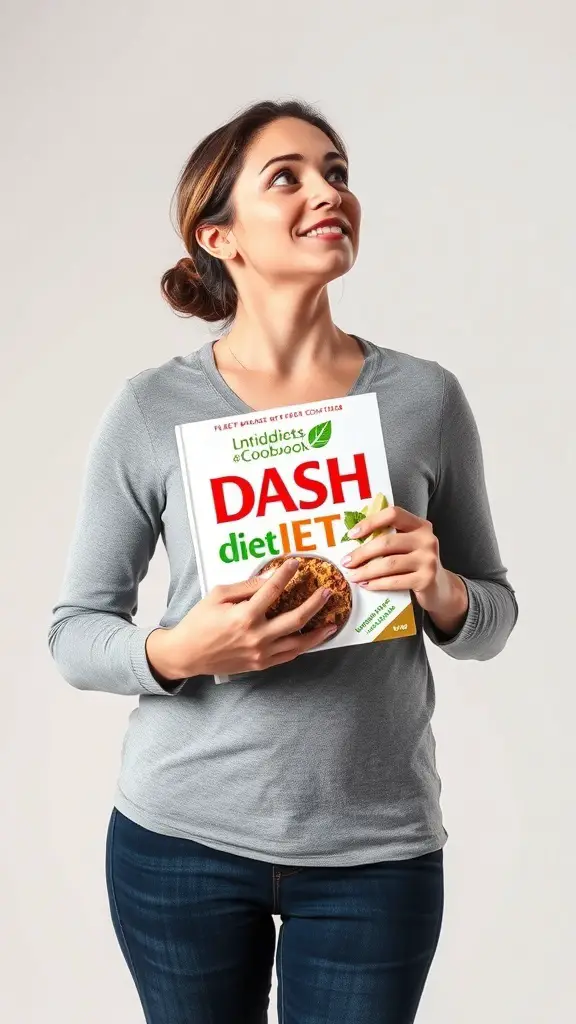
The DASH diet is a popular choice for those looking to improve their health. It focuses on whole foods, fruits, vegetables, and lean proteins. However, starting any new eating plan can come with its own set of challenges.
In the image, we see a person holding a DASH diet cookbook, which suggests a proactive approach to learning and adapting. This is a great first step! Having a resource can help you navigate meal planning and ingredient choices.
One common challenge is finding the right recipes that fit the DASH guidelines. It’s helpful to start with simple meals that you enjoy. Look for recipes that use fresh ingredients and limit sodium. This can make the transition smoother.
Another hurdle might be adjusting your taste buds. If you’re used to high-sodium foods, it may take time to appreciate the natural flavors of fresh ingredients. Be patient with yourself. Gradually reduce salt in your meals and experiment with herbs and spices for flavor.
Lastly, social situations can be tricky. Eating out or attending gatherings may tempt you to stray from your plan. It’s okay to indulge occasionally, but try to stick to your goals. Planning ahead can help you make better choices when dining out.
Tracking Your Progress on the DASH Diet
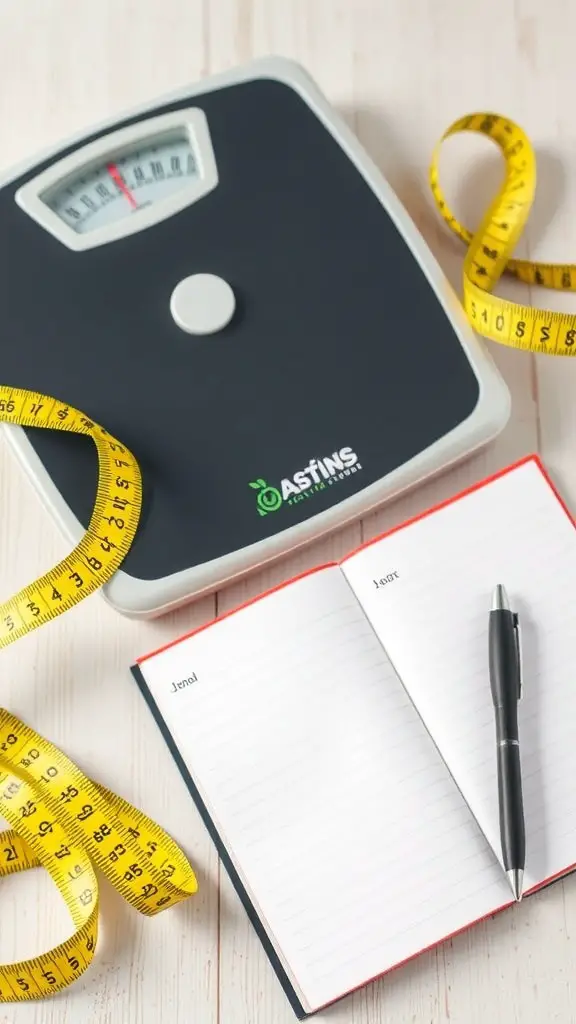
Keeping track of your progress on the DASH diet can make a big difference in your journey. The image shows a scale and a notebook, which are great tools for monitoring your weight and dietary habits.
The scale represents the importance of regular weigh-ins. It’s a simple way to see how your body responds to the changes you’re making. Weigh yourself at the same time each week for consistency.
The notebook is perfect for jotting down meals, snacks, and feelings about your food choices. Writing things down helps you stay accountable and can highlight patterns in your eating habits.
Measuring your waist with a tape measure can also provide insights into your health. Keeping track of these numbers can motivate you to stick with the DASH diet.
Remember, progress isn’t just about numbers. Celebrate small victories, like trying a new recipe or choosing a healthy snack. Each step counts!
DASH Diet Success Stories
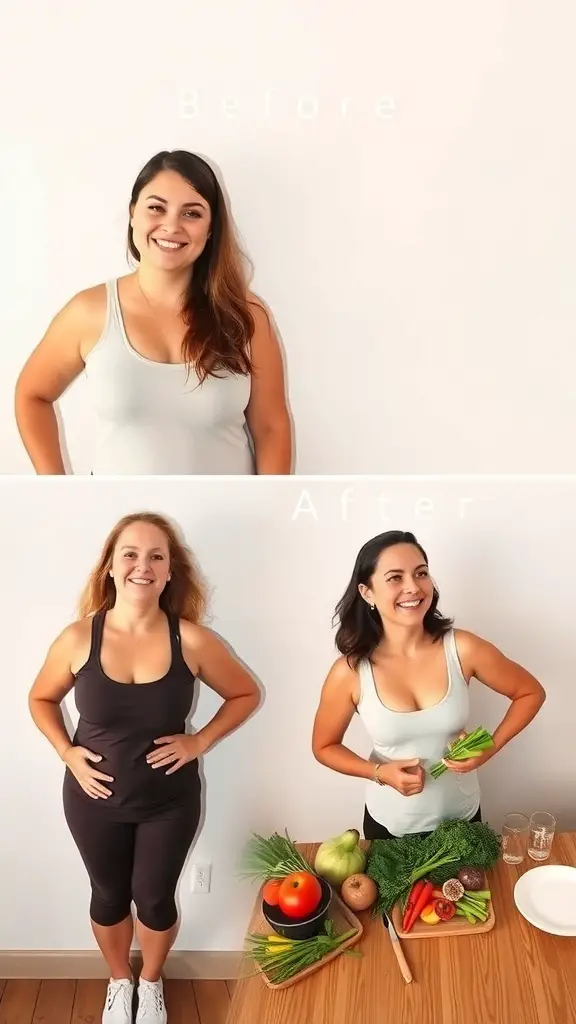
The image shows a striking transformation of two individuals, highlighting their journey on the DASH diet. The top half displays a smiling woman before starting the diet, while the bottom half reveals her after the diet, radiating confidence and happiness.
This visual representation emphasizes the positive changes that can come from adopting healthier eating habits. The vibrant display of fresh fruits and vegetables in the after photo suggests a shift towards nutritious choices, which is a key aspect of the DASH diet.
Success stories like these inspire many to consider making dietary changes. The DASH diet focuses on whole foods, encouraging people to enjoy a variety of fruits, vegetables, lean proteins, and whole grains. It’s not just about losing weight; it’s about feeling better and living healthier.
Many people have experienced similar transformations, finding joy in cooking and trying new recipes. The journey can be fun and rewarding, filled with delicious meals and newfound energy.
Shopping List for DASH Diet Beginners
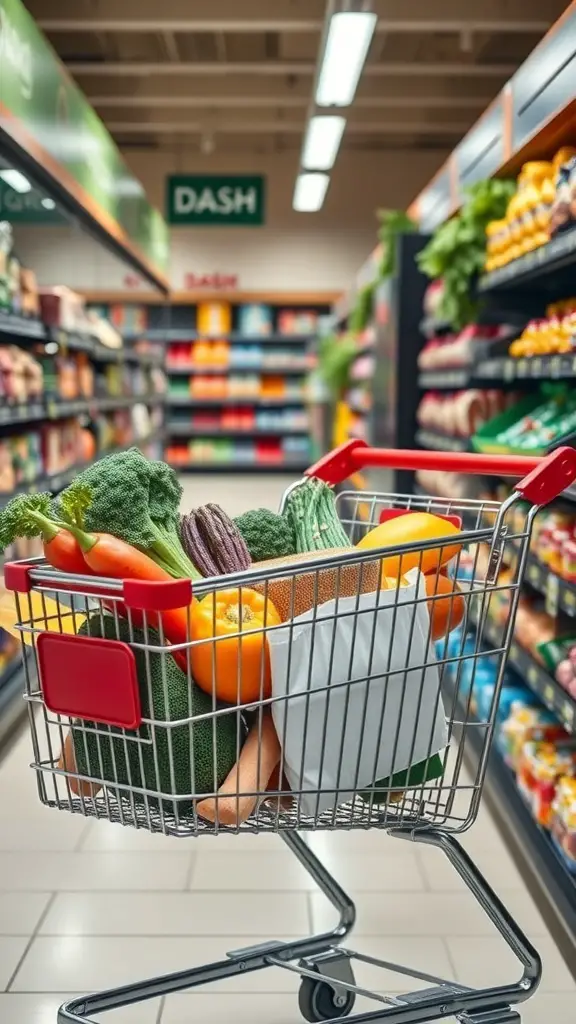
Starting the DASH diet is exciting, and having the right shopping list makes it easier. The image shows a shopping cart filled with colorful vegetables, a great representation of what to include in your diet.
Focus on fresh produce like broccoli, carrots, and bell peppers. These veggies are packed with nutrients and low in calories. They help you feel full and satisfied.
Don’t forget whole grains! Items like brown rice and whole wheat bread should be on your list. They provide energy and fiber, which is essential for digestion.
Include lean proteins such as chicken, fish, and beans. These options are great for muscle health and keep you feeling energized throughout the day.
Lastly, look for healthy fats. Nuts, seeds, and olive oil are excellent choices. They add flavor and help with nutrient absorption.
Resources for Further Learning about the DASH Diet

The image shows a laptop displaying a webpage dedicated to the DASH diet, surrounded by books and a small plant. This setup suggests a cozy and informative space for learning about healthy eating.
For those starting with the DASH diet, there are plenty of resources to explore. Websites dedicated to the DASH diet provide meal plans, recipes, and tips for success. You can find articles that explain the benefits of the diet, focusing on heart health and overall wellness.
Books on the DASH diet are also great companions. They often include detailed recipes, shopping lists, and even personal stories from others who have tried the diet. Look for titles that offer practical advice and easy-to-follow guidelines.
Online communities can be a fantastic support system. Joining forums or social media groups allows you to share experiences, ask questions, and get motivation from others on the same journey. Connecting with like-minded individuals makes the process more enjoyable.
Meal Prep Ideas for Busy Beginners
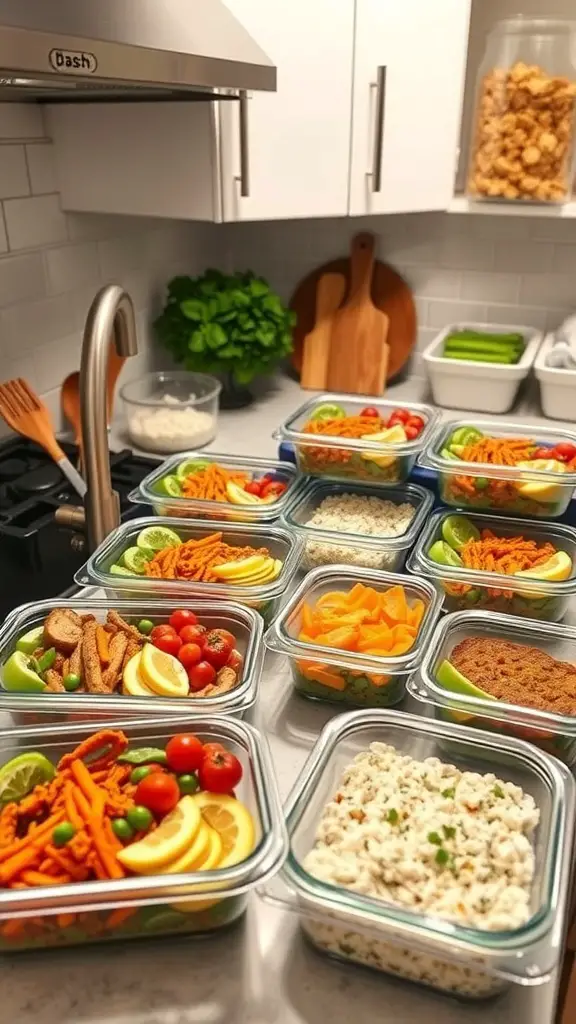
Meal prepping is a fantastic way to stick to the DASH diet, especially for those with a busy lifestyle. The image shows a well-organized kitchen counter filled with glass containers. Each container is packed with colorful, healthy ingredients, making meal prep both easy and visually appealing.
Start by choosing a few recipes that fit the DASH guidelines. Think about incorporating lean proteins, whole grains, and plenty of fruits and vegetables. For instance, you could prepare grilled chicken with a side of quinoa and steamed broccoli. This combination is nutritious and keeps well in the fridge.
Another idea is to create a salad bar. Chop up various veggies like bell peppers, cucumbers, and carrots. Store them in separate containers. When it’s time to eat, just mix and match your favorites. Adding a protein source like chickpeas or grilled shrimp can make it even more satisfying.
Don’t forget about snacks! Prepare small containers of nuts, yogurt, or sliced fruits. These can be grabbed on the go and help maintain energy levels throughout the day.
Label your containers with the meal name and date. This makes it easy to grab what you need without any guesswork. With a little planning, you’ll find that sticking to the DASH diet can be simple and enjoyable.
